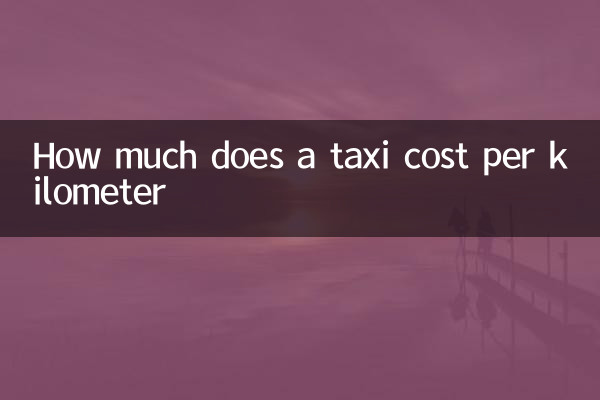How much does a taxi cost per kilometer? Analysis of the latest national pricing standards and hot topics
Recently, the issue of taxi pricing has once again become the focus of hot discussion on social platforms. With the fluctuations in oil prices, the popularization of new energy vehicles and local policy adjustments, taxi operating costs and pricing methods are undergoing significant changes. This article will combine hot topics on the Internet for the past 10 days to structure the current national taxi pricing status and related information for you.
1. Comparison of taxi pricing in major cities across the country in 2023

| City | Day start price | Daytime unit price (yuan/km) | Night price increase ratio | The proportion of new energy vehicles |
|---|---|---|---|---|
| Beijing | 13 yuan/3 km | 2.3 | 20% | 15% |
| Shanghai | 14 yuan/3 km | 2.5 | 30% | 25% |
| Guangzhou | 12 yuan/3 km | 2.2 | 25% | 18% |
| Shenzhen | 10 yuan/2 km | 2.4 | 30% | 32% |
| Chengdu | 8 yuan/2 km | 1.9 | 20% | 12% |
| Wuhan | 10 yuan/3 km | 1.8 | 15% | 8% |
2. Relevant analysis of recent hot events
1.Four consecutive surges in oil prices trigger surcharge dispute: In August, domestic refined oil prices rose four times in a row. Kunming, Zhengzhou and other cities restarted a fuel surcharge of 1 yuan per single time, and related topics received 230 million views on Weibo.
2.New energy taxi cost advantages emerge: Shenzhen released data showing that the operating cost per kilometer of electric taxis is 0.4-0.6 yuan lower than that of fuel vehicles, but 39% of passengers reported that there was a phenomenon of load refusal caused by battery life anxiety.
3.Adjustment of holiday pricing rules: Pilot holidays in tourist cities such as Hangzhou and Xi'an were priced in segments, with the unit price rising by 15% during peak hours, and the number of views on related topics exceeded 80 million times.
3. Disassembly of the valuation components
| Cost items | Percentage | Remark |
|---|---|---|
| Vehicle depreciation | 18-22% | Fuel vehicle cycle 5 years / tram 8 years |
| Energy consumption | 25-35% | Oil price fluctuations have significant impact |
| Driver income | 30-40% | About 0.6-0.8 yuan/km |
| Platform drawing | 8-15% | The proportion of online car-hailing integrated orders increases |
4. Core consumer concerns
1.Pricing transparency: The latest survey by Gaode Map shows that 67% of passengers believe that real-time pricing parameters should be displayed forcibly, especially additional items such as night service fees and low-speed waiting fees.
2.Price difference between new and old models: Nanjing, Suzhou and other places have different prices in the same city. The unit price of new energy vehicles is generally 0.2-0.3 yuan/km higher than that of fuel vehicles, which has caused doubts about fairness.
3.Dispute on long-distance air refund: The calculation standard for 50% rebate of cross-city orders has caused heated discussion in Xiaohongshu, and most users recommend accounting based on the actual return distance.
5. Industry development trend forecast
1.Dynamic pricing pilot expansion: Beijing and Shanghai plan to launch a floating pricing mechanism during rainy and snowy weather and major events, and adjust unit prices based on real-time road conditions.
2.Billing model innovation: Shenzhen pilots the "one-price + mileage subsidy" model, giving drivers additional incentives for orders over 10 kilometers.
3.Regulatory technology upgrade: Blockchain pricing systems have been enabled in many places to realize real-time on-chain and proof storage of itinerary data, effectively reducing pricing disputes.
Overall, the price per kilometer of taxis has shifted from simple cost accounting to multi-dimensional dynamic balance. It is recommended that passengers check real-time pricing standards through the official APP before traveling, and pay attention to the monthly operating cost monitoring reports released by local transportation departments to protect their rights and interests. For special scenarios such as cross-city, be sure to confirm the pricing rules with the driver in advance to avoid disputes.

check the details

check the details